
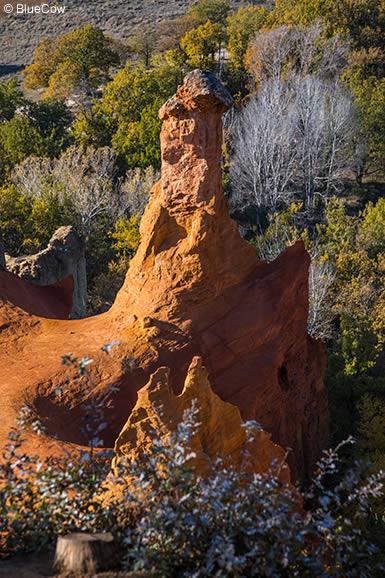
Wedged between the Luberon mountains to the south and the Monts de Vaucluse to the north, the most spectacular of ochre sites is nicknamed “the Colorado Provençal”. Between the villages of Rustrel and Gignac, the colours of the earth, due to the presence of ochre in the subsoil, offers visitors a breathtaking show.
A small stream which flows from Gignac to Apt and which, with the rains, swells and sweeps along yellow waters rich in ochre, the Doa has over the centuries worked away at the earth's layers, exposing the white limestone, green clays and banks of ochre sands, which here take on a tormented form rarely seen elsewhere.
A mirage? A technicolor film? A surprise in any case. Covering kilometres right in the heart of Provence, the old and crimson cliffs worthy of the Far West display canyon-like quarries, a succession of earth pillars and valleys with amazing contours.
Beneath the insolent blue sky of the Vaucluse, it is above all the palette of colours that will impress you: from bright yellow to blood red and encompassing all shades of orange, sometimes streaked with blue or green.
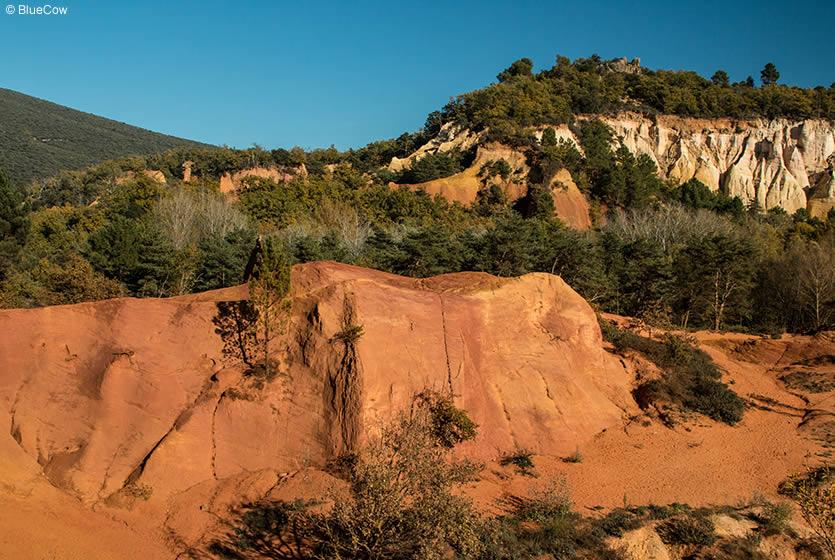
The Colorado Provençal in Rustrel
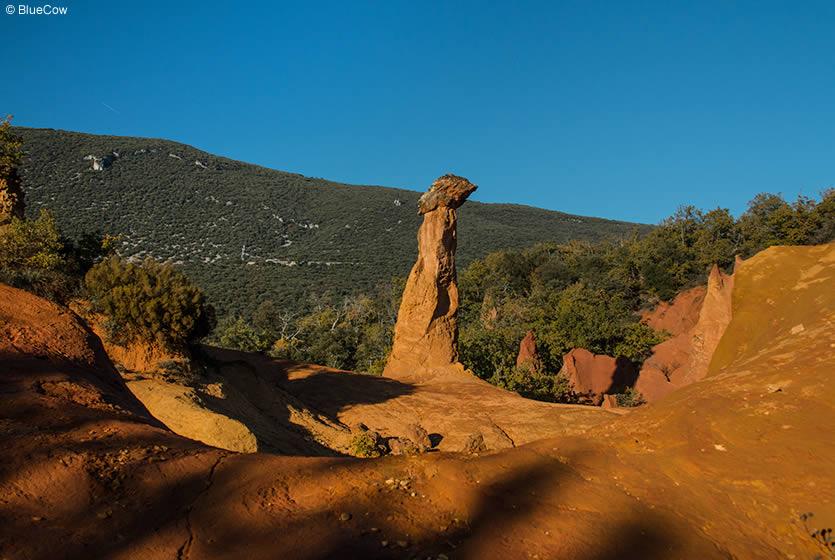
The ochres of Rustrel
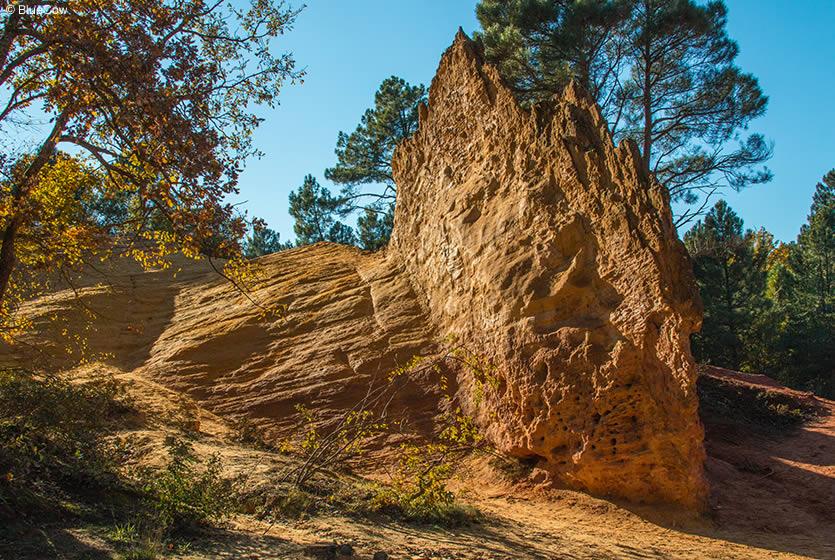
Landscape of the Colorado of Rutrel
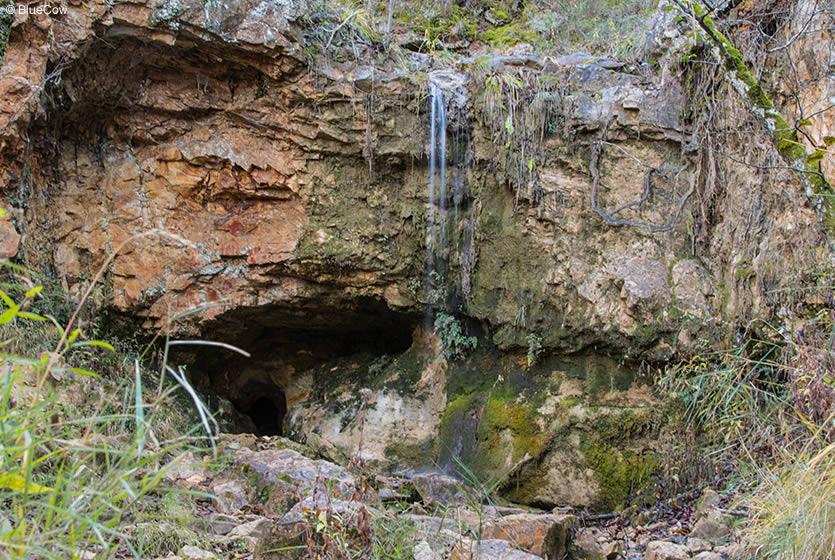
Waterfall of the ravin des Gourgues ravine
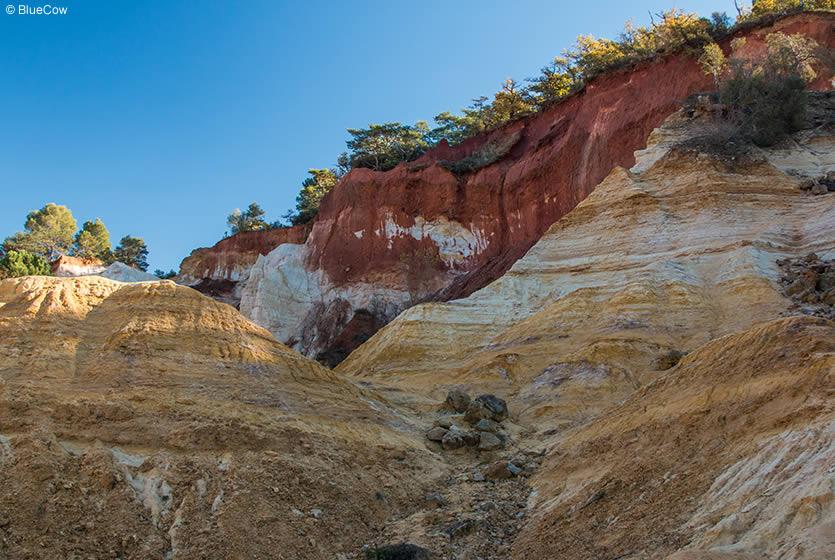
Different colors of ochre
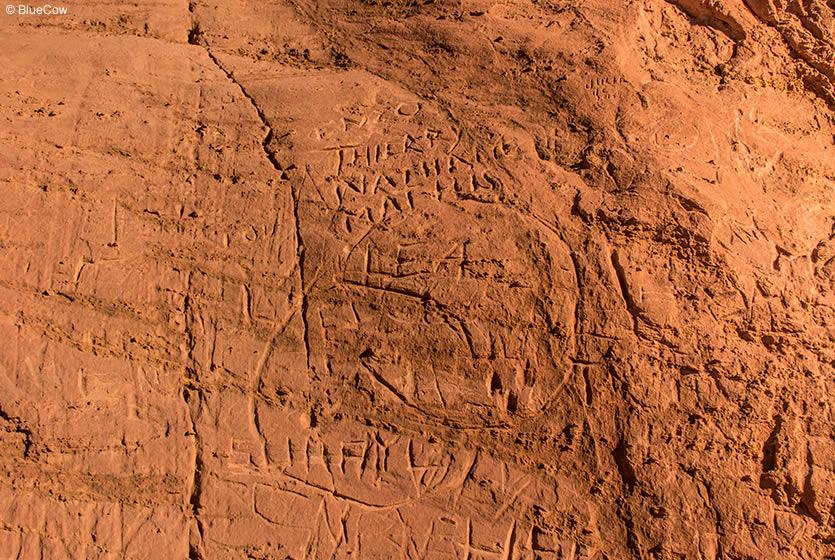
Graffiti on the rocks of ochre
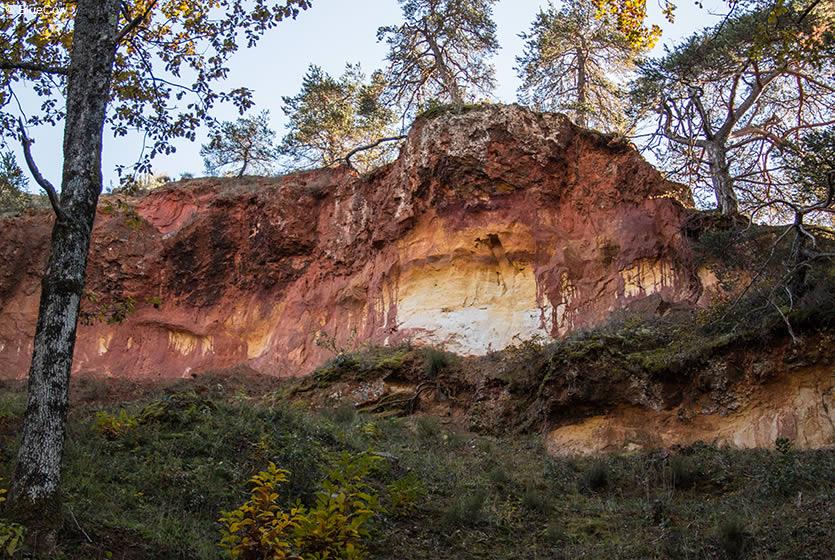
Wandering in the Colorado Provençal
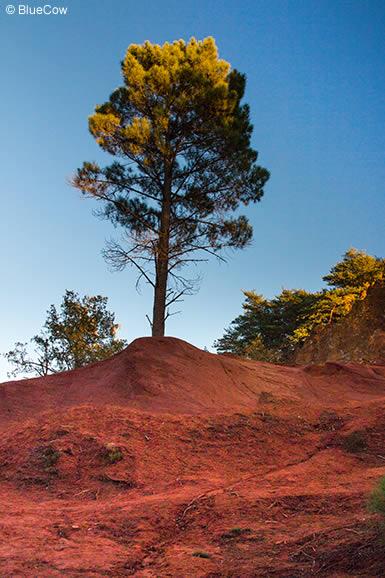
Banks of silica lost in the ocean of white limestone of Provence, "ochre" is composed of 90% sand (silica) and 10% clay and goethite (a pigment which gives its colour).
Legend has it that Sermonde, wife of the horrible seigneur of the village of Roussillon, loved a troubadour. The jealous castle lord killed him with a dagger and, after cooking it, served the lover's heart to his wife. She found the dish to be delicious but after learning the truth she threw herself off a cliff and the earth became coloured with her blood.
The reality is of course different, starting with the sea. A hundred million years ago, at the foot of the Alps, the sea bottom received thick deposits of sand, some full of green-tinted iron silicate. At the end of the Cretaceous, the climate changed and became tropical. The emerging sand solidified and the mineral content was transformed into pure clay and iron hydroxide. The colour changed from green to red and the natural ochre of the Vaucluse was born. Specialists have counted between 17 and 25 different shades depending on the zone.
Today the exploitation of the site is coming to an end but the Colorado Provençal still offers up its majestic panorama to the visitors' eyes. Trails have been laid out to let you discover on foot, by bike or on horseback the rocky massif's extraordinary blaze of colours. But watch out for your clothing, don't forget that ochre is a strong dye!
Copyright texts Anne Sophie PRUSAK - Tel.: 06 83 07 34 41 or 04 96 14 02 91
Protected area. Please follow the instructions
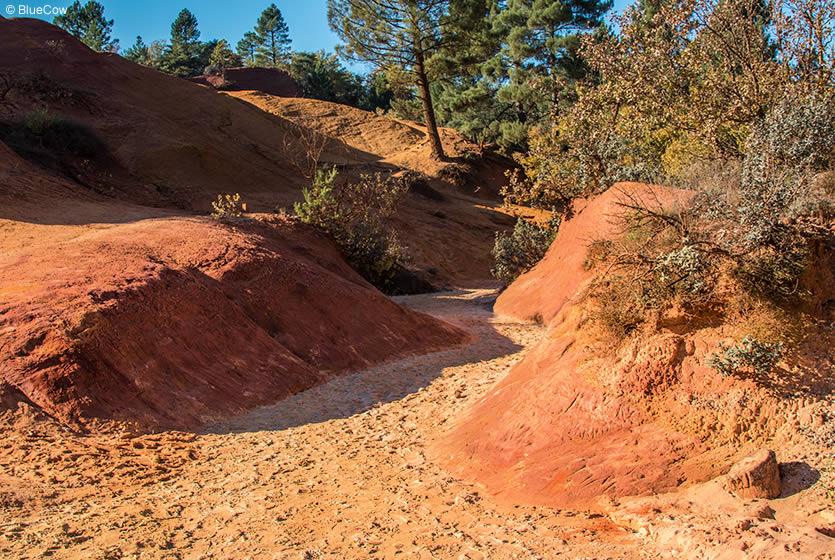
Western landscape
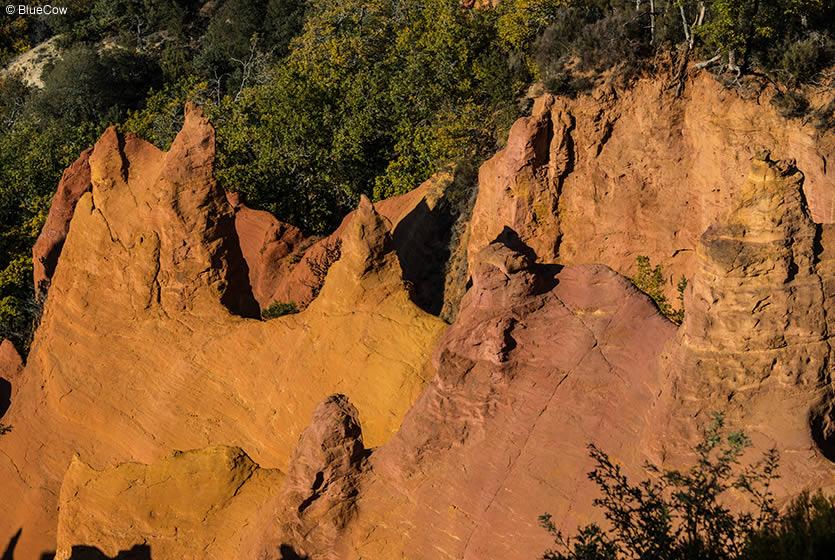
The chimneys of the fairies
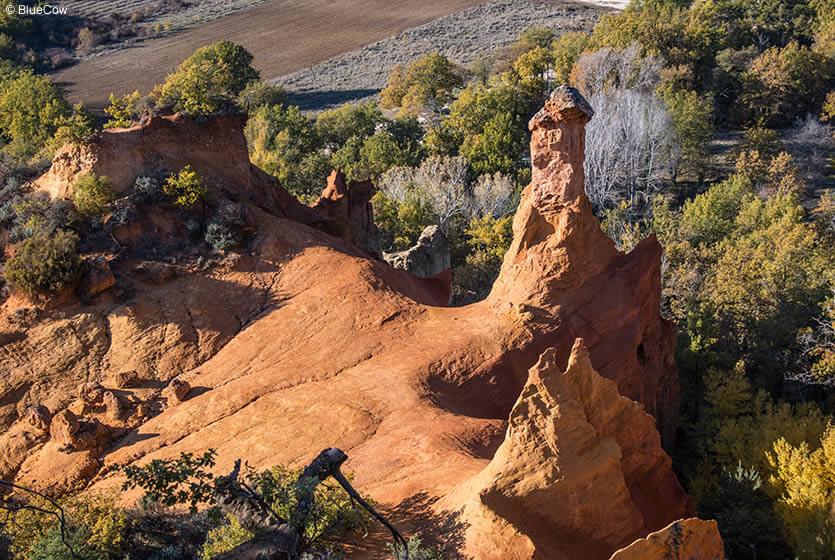
The chimneys of the fairies
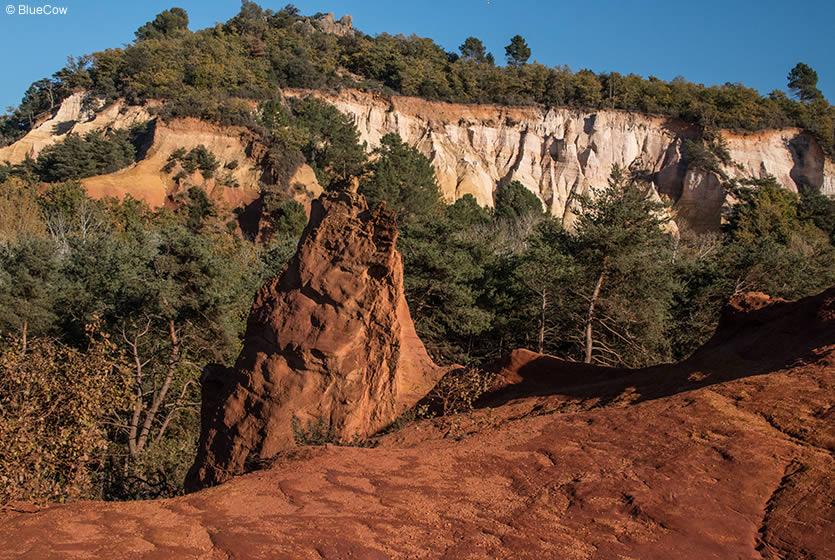
White ochre cliffs
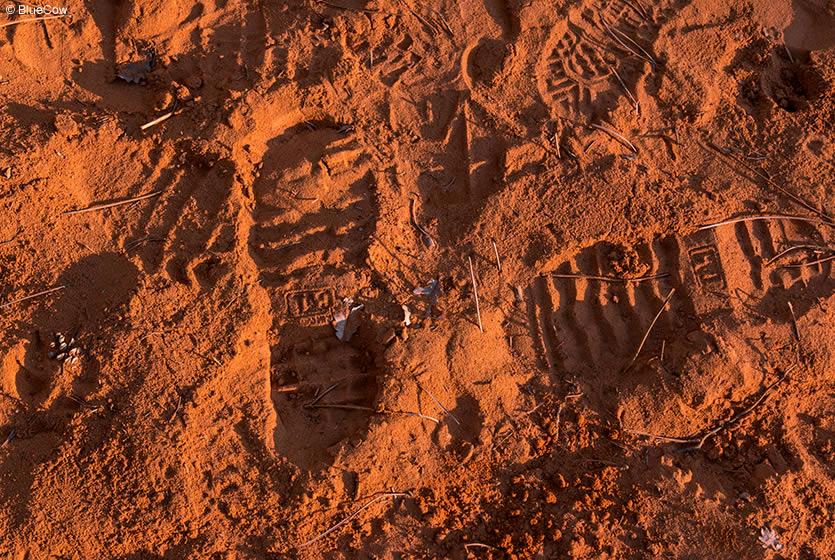
Hike in the Colorado of Rustrel
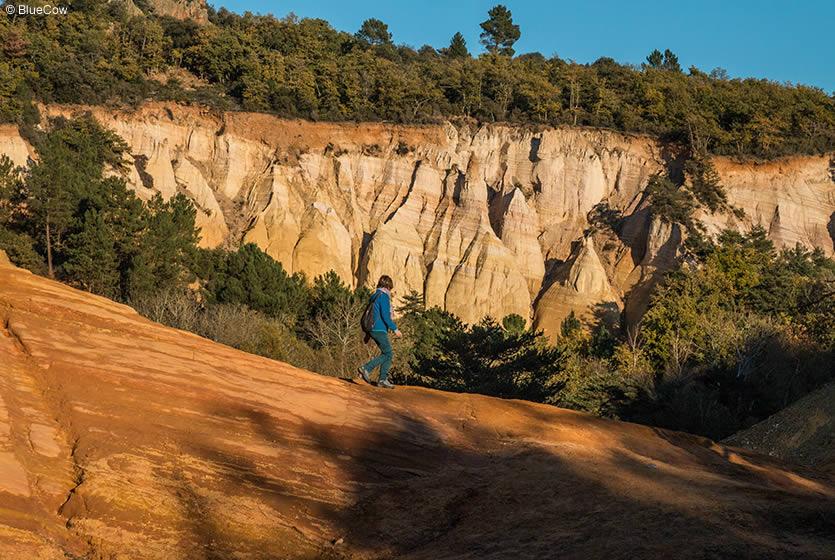
Walking the ochres of the Luberon
Le Colorado Provençal de Rustrel - Parking des milles couleurs - 84400 Rustrel
04.90.75.04.87
http://www.coloradoprovencal.fr/Where to sleep?